Mechanical Properties of High-Performance Hybrid Fibre-Reinforced Concrete at Elevated Temperatures
Abstract
1. Introduction
2. Experimental Programs
2.1. Materials and Mix Composition
2.2. Heating and Cooling Regime
2.3. Mass Loss
2.4. Mechanical Properties Tests
3. Results and Discussion
3.1. Mass Loss
3.2. Cracks and Spalling
3.3. Compressive Strength
3.4. Split Tensile Strength
3.5. Flexural Strength
4. Conclusions
- There is an apparent link between adding more PP fibres and mass loss of concrete, which showed that increasing the inclusion of PP fibres helped the free water to evaporate easily through the channels in the concrete matrix.
- The incorporation of PP fibres in HPC reduced the compressive strength slightly, but increased its heat resistance in terms of residual compressive strength after the exposure to 800 °C.
- The hybridization of 5DH steel and two-length PP fibres with a percentage of 1% and 0.125% respectively, increased the split tensile strength and improved the residual strength as a percentage or value.
- Long PP fibres gave a better flexural performance and maintained 23% of the concrete’s strength after the exposure.
- 5DH steel fibres improved the mechanical performance considerably.
- 5DH steel fibres kept the integrity of concrete after exposure to elevated temperatures for cubes and cylinders only
- PP fibres helped in mitigating the explosive spalling completely and reduced thermal cracks. However, steel fibres cannot reduce the pore pressure effectively, and two samples showed an explosive spalling.
Author Contributions
Funding
Institutional Review Board Statement
Informed Consent Statement
Data Availability Statement
Acknowledgments
Conflicts of Interest
References
- Williams, K.C.; Partheeban, P.; Kala, F.T. Mechanical properties of high performance concrete mechanical properties of high performance concrete incorporating granite powder as fine aggregate. Int. J. Des. Manuf. Technol. 2008, 2, 67–73. [Google Scholar] [CrossRef]
- Haridharan, M.; Matheswaran, S.; Murali, G.; Abid, S.R.; Fediuk, R.; Amran, Y.M.; Abdelgader, H.S. Impact response of two-layered grouted aggregate fibrous concrete composite under falling mass impact. Constr. Build. Mater. 2020, 263, 120628. [Google Scholar] [CrossRef]
- Murali, G.; Abid, S.R.; Amran, Y.M.; Abdelgader, H.S.; Fediuk, R.; Susrutha, A.; Poonguzhali, K. Impact performance of novel multi-layered prepacked aggregate fibrous composites under compression and bending. Structures 2020, 28, 1502–1515. [Google Scholar] [CrossRef]
- Afroughsabet, V.; Biolzi, L.; Ozbakkaloglu, T. High-performance fiber-reinforced concrete: A review. J. Mater. Sci. 2016, 51, 6517–6551. [Google Scholar] [CrossRef]
- Lesovik, V.; Voronov, V.; Glagolev, E.; Fediuk, R.; Alaskhanov, A.; Amran, Y.M.; Murali, G.; Baranov, A. Improving the behaviors of foam concrete through the use of composite binder. J. Build. Eng. 2020, 31, 101414. [Google Scholar] [CrossRef]
- Amran, M.; Fediuk, R.; Vatin, N.; Lee, Y.H.; Murali, G.; Ozbakkaloglu, T.; Klyuev, S.; Alabduljabber, H. Fibre-reinforced foamed concretes: A review. Materials 2020, 13, 4323. [Google Scholar] [CrossRef] [PubMed]
- Amran, Y.M.; Alyousef, R.; Alabduljabbar, H.; Khudhair, M.; Hejazi, F.; Alaskar, A.; Alrshoudi, F.; Siddika, A. Performance properties of structural fibred-foamed concrete. Results Eng. 2020, 5, 100092. [Google Scholar] [CrossRef]
- Féron, C.; Autuori, P.; Bessière, C.; Joyeux, D. Vers des moyens de prévenir l’écaillage du béton en tunnel. Tunn. Ouvrages Souterr. 2006, 196, 228–235. [Google Scholar]
- Raj, B.; Sathyan, D.; Madhavan, M.K.; Raj, A. Mechanical and durability properties of hybrid fiber reinforced foam concrete. Constr. Build. Mater. 2020, 245, 118373. [Google Scholar] [CrossRef]
- Jin, L.; Zhang, R.; Dou, G.; Xu, J.; Du, X. Experimental and numerical study of reinforced concrete beams with steel fibers subjected to impact loading. Int. J. Damage Mech. 2017, 27, 1058–1083. [Google Scholar] [CrossRef]
- Fediuk, R. High-strength fibrous concrete of Russian Far East natural materials. IOP Conf. Ser. Mater. Sci. Eng. 2016, 116, 012020. [Google Scholar] [CrossRef]
- Ahmed, R.H.; Abdel-Hameed, G.D.; Farahat, A.M. Behavior of hybrid high-strength fiber reinforced concrete slab-column connections under the effect of high temperature. HBRC J. 2016, 12, 54–62. [Google Scholar] [CrossRef][Green Version]
- Abid, S.R.; Murali, G.; Amran, M.; Vatin, N.; Fediuk, R.; Karelina, M. Evaluation of mode II fracture toughness of hybrid fibrous geopolymer composites. Materials 2021, 14, 349. [Google Scholar] [CrossRef] [PubMed]
- Song, P.; Hwang, S. Mechanical properties of high-strength steel fiber-reinforced concrete. Constr. Build. Mater. 2004, 18, 669–673. [Google Scholar] [CrossRef]
- Jang, S.-J.; Yun, H.-D. Combined effects of steel fiber and coarse aggregate size on the compressive and flexural toughness of high-strength concrete. Compos. Struct. 2018, 185, 203–211. [Google Scholar] [CrossRef]
- Gao, D.; Zhang, L.; Nokken, M. Mechanical behavior of recycled coarse aggregate concrete reinforced with steel fibers under direct shear. Cem. Concr. Compos. 2017, 79, 1–8. [Google Scholar] [CrossRef]
- Ahmed, G.M.A.A.; Fedyuk, R.S.; Liseytsev, Y.L.; Timokhin, R.A. Use of Iraq concrete scrap as filler and aggregate of heavyweight and lightweight concrete. Constr. Mater. Prod. 2020, 3, 28–39. [Google Scholar] [CrossRef]
- Amran, Y.H.M. Influence of structural parameters on the properties of fibred-foamed concrete. Innov. Infrastruct. Solut. 2020, 5, 1–18. [Google Scholar] [CrossRef]
- Murali, G.; Abid, S.R.; Abdelgader, H.S.; Amran, Y.H.M.; Shekarchi, M.; Wilde, K. Repeated projectile impact tests on multi-layered fibrous cementitious composites. Int. J. Civ. Eng. 2021, 19, 635–651. [Google Scholar] [CrossRef]
- Markovic, I. High-Performance Hybrid-Fibre Concrete: Development and Utilisation; IOS Press: Washington, DC, USA, 2006. [Google Scholar]
- Fediuk, R.S.; Ibragimov, R.A.; Lesovik, V.S.; Pak, A.A.; Krylov, V.V.; Poleschuk, M.M.; Stoyushko, N.Y.; Gladkova, N.A. Processing equipment for grinding of building powders. IOP Conf. Ser. Mater. Sci. Eng. 2018, 327, 042029. [Google Scholar] [CrossRef]
- Jaishankar, P.; Murali, G.; Salaimanimagudam, M.P.; Amran, Y.H.M.; Fediuk, R.; Karthikeyan, K. Study of topology optimized hammerhead pier beam made with novel preplaced aggregate fibrous concrete. Period. Polytech. Civ. Eng. 2020, 65, 287–298. [Google Scholar] [CrossRef]
- Peng, G.-F.; Huang, Z.-S. Change in microstructure of hardened cement paste subjected to elevated temperatures. Constr. Build. Mater. 2008, 22, 593–599. [Google Scholar] [CrossRef]
- Kalifa, P.; Chéné, G.; Gallé, C. High-temperature behaviour of HPC with polypropylene fibres: From spalling to microstructure. Cem. Concr. Res. 2001, 31, 1487–1499. [Google Scholar] [CrossRef]
- Ramakrishnan, K.; Depak, S.; Hariharan, K.; Abid, S.R.; Murali, G.; Cecchin, D.; Fediuk, R.; Amran, Y.M.; Abdelgader, H.S.; Khatib, J.M. Standard and modified falling mass impact tests on preplaced aggregate fibrous concrete and slurry infiltrated fibrous concrete. Constr. Build. Mater. 2021, 298, 123857. [Google Scholar] [CrossRef]
- Li, Y.; Lu, X.; Guan, H.; Ying, M.; Yan, W. A case study on a fire-induced collapse accident of a reinforced concrete frame-supported masonry structure. Fire Technol. 2015, 52, 707–729. [Google Scholar] [CrossRef]
- Abdul-Rahman, M.; Al-Attar, A.A.; Hamada, H.M.; Tayeh, B. Microstructure and structural analysis of polypropylene fibre reinforced reactive powder concrete beams exposed to elevated temperature. J. Build. Eng. 2020, 29, 101167. [Google Scholar] [CrossRef]
- Wald, F.; Chlouba, J.; Uhlı, A.; Kallerova, P.; Stujberova, M. Temperatures during fire tests on structure and its prediction according to Eurocodes. Fire Saf. J. 2009, 44, 135–146. [Google Scholar] [CrossRef]
- Ma, Q.; Guo, R.; Zhao, Z.; Lin, Z.; He, K. Mechanical properties of concrete at high temperature—A review. Constr. Build. Mater. 2015, 93, 371–383. [Google Scholar] [CrossRef]
- Chang, Y.; Chen, Y.; Sheu, M.; Yao, G. Residual stress–strain relationship for concrete after exposure to high temperatures. Cem. Concr. Res. 2006, 36, 1999–2005. [Google Scholar] [CrossRef]
- Bessmertnyi, V.S.; Lesovik, V.S.; Krokhin, V.P.; Puchka, O.V.; Nikiforova, E.P. The reducing effect of argon in the plasma treatment of high-melting nonmetallic materials (A review). Glas. Ceram. 2002, 58, 362–364. [Google Scholar] [CrossRef]
- Kalifa, P.; Menneteau, F.-D.; Quenard, D. Spalling and pore pressure in HPC at high temperatures. Cem. Concr. Res. 2000, 30, 1915–1927. [Google Scholar] [CrossRef]
- Elistratkin, M.Y.; Lesovik, V.S.; Zagorodnjuk, L.H.; Pospelova, E.A.; Shatalova, S.V. New point of view on materials development. IOP Conf. Ser. Mater. Sci. Eng. 2018, 327, 032020. [Google Scholar] [CrossRef]
- Bažant, Z.P. Analysis of pore PRESSURE, Thermal stress and FRACTURE in Rapidly Heated Concrete. In Proceedings of the International Workshop on Fire Performance of High-Strength Concrete, Gaithersburg, MD, USA, 13–14 February 1997; Available online: https://tsapps.nist.gov/publication/get_pdf.cfm?pub_id=916655 (accessed on 15 July 2021).
- Atkinson, T. Polypropylene fibers control explosive spalling in high-performance concrete. Concrete 2004, 38, 69–70. [Google Scholar]
- Xiao, J.; Falkner, H. On residual strength of high-performance concrete with and without polypropylene fibres at elevated temperatures. Fire Saf. J. 2006, 41, 115–121. [Google Scholar] [CrossRef]
- Noumowé, A. Mechanical properties and microstructure of high strength concrete containing polypropylene fibres exposed to temperatures up to 200 °C. Cem. Concr. Res. 2005, 35, 2192–2198. [Google Scholar] [CrossRef]
- Taerwe, L. RILEM Technical Committee HTC, State of the Art Report; CRC Press: London, UK, 2004; p. 736. [Google Scholar]
- Chernysheva, N.; Lesovik, V.; Fediuk, R.; Vatin, N. Improvement of performances of the gypsum-cement fiber reinforced composite (GCFRC). Materials 2020, 13, 3847. [Google Scholar] [CrossRef] [PubMed]
- Fedorov, V.; Mestnikov, A. Influence of cellulose fibers on structure and properties of fiber reinforced foam concrete. MATEC Web Conf. 2018, 143, 02008. Available online: https://www.matec-conferences.org/articles/matecconf/abs/2018/02/matecconf_yssip2017_02008/matecconf_yssip2017_02008.html (accessed on 17 July 2021). [CrossRef]
- Murali, G.; Abid, S.R.; Karthikeyan, K.; Haridharan, M.; Amran, M.; Siva, A. Low-velocity impact response of novel prepacked expanded clay aggregate fibrous concrete produced with carbon nano tube, glass fiber mesh and steel fiber. Constr. Build. Mater. 2021, 284, 122749. [Google Scholar] [CrossRef]
- Bei, S.; Zhixiang, L. Investigation on spalling resistance of ultra-high-strength concrete under rapid heating and rapid cooling. Case Stud. Constr. Mater. 2016, 4, 146–153. [Google Scholar] [CrossRef]
- Ding, Y.; Azevedo, C.M.; Aguiar, J.; Jalali, S. Study on residual behaviour and flexural toughness of fibre cocktail reinforced self compacting high performance concrete after exposure to high temperature. Constr. Build. Mater. 2012, 26, 21–31. [Google Scholar] [CrossRef]
- Ding, Y.N.; Wang, Y.H.; Zhang, Y.L. Investigation on Toughness of Fibre Cocktail Reinforced Self Consolidating Concrete after High Temperature. Mater. Sci. Forum 2010, 650, 67–77. [Google Scholar] [CrossRef]
- Pliya, P.; Beaucour, A.-L.; Noumowé, A. Contribution of cocktail of polypropylene and steel fibres in improving the behaviour of high strength concrete subjected to high temperature. Constr. Build. Mater. 2010, 25, 1926–1934. [Google Scholar] [CrossRef]
- Bošnjak, J.; Sharma, A.; Grauf, K. Mechanical properties of concrete with steel and polypropylene fibres at elevated temperatures. Fibers 2019, 7, 9. [Google Scholar] [CrossRef]
- Pliya, P.; Beaucour, A.L.; Noumowé, A. Strength and porosity of concrete incorporating polypropylene and steel fibres subjected to high temperature. In Proceedings of the 20th International Conference on Structural Mechanics in Reactor Technology (SMiRT 20), Helsinki, Finland, 9–14 August 2009; Available online: https://repository.lib.ncsu.edu/bitstream/handle/1840.20/23593/1_paper_2024.pdf?sequence=1&isAllowed=y (accessed on 15 July 2021).
- Adnan, A.; Suradi, S. Comparison on the effect of earthquake and wind loads on the, performance of reinforced concrete buildings. In Proceedings of the 14th World Conference on Earthquake Engineering, Kuala Lumpur, Malaysia, 2–4 October 2008; pp. 1–3. [Google Scholar]
- Suhaendi, S.L.; Horiguchi, T. Effect of short fibers on residual permeability and mechanical properties of hybrid fibre reinforced high strength concrete after heat exposition. Cem. Concr. Res. 2006, 36, 1672–1678. [Google Scholar] [CrossRef]
- Fediuk, R.; Mosaberpanah, M.A.; Lesovik, V. Development of fiber reinforced self-compacting concrete (FRSCC): Towards an efficient utilization of quaternary composite binders and fibers. Adv. Concr. Constr. 2020, 9, 387–395. [Google Scholar]
- ASTM C150M-15, A.C. Standard Specification for Portland Cement; ASTM International: West Conshohocken, PA, USA, 2015. [Google Scholar]
- ASTM C1240-20. Standard Specification for Silica Fume Used in Cementitious Mixtures; ASTM International: West Conshohocken, PA, USA, 2011. [Google Scholar]
- ASTM C33/C33M-18. Standard Specification for Concrete Aggregates; ASTM International: West Conshohocken, PA, USA, 2008. [Google Scholar]
- Lee, S.-J.; Yoo, D.-Y.; Moon, D.-Y. Effects of hooked-end steel fiber geometry and volume fraction on the flexural behavior of concrete pedestrian decks. Appl. Sci. 2019, 9, 1241. [Google Scholar] [CrossRef]
- ACI 211-91. Standard Practice for Selecting Proportions for Normal, Heavyweight, and Mass Concrete. American Concrete Institute. Committee (ACI) Committee 211. 1991. Available online: https://kashanu.ac.ir/Files/aci%20211_1_91.pdf (accessed on 17 July 2021).
- Dawood, E.; Ramli, M. Contribution of hybrid fibers on the properties of high strength concrete having high workability. Procedia Eng. 2011, 14, 814–820. [Google Scholar] [CrossRef]
- Wu, H.; Lin, X.; Zhou, A. A review of mechanical properties of fibre reinforced concrete at elevated temperatures. Cem. Concr. Res. 2020, 135, 106117. [Google Scholar] [CrossRef]
- ASTM C496. Standard Test Method for Splitting Tensile Strength of Cylindrical Concrete Specimens, American Standards for Testing and Materials; ASTM International: West Conshohocken, PA, USA, 2011. [Google Scholar]
- ASTM C78. Standard Test Method for Flexural Strength of Concrete (Using Simple Beam with Third-Point Loading), American Standards for Testing and Materials; ASTM International: West Conshohocken, PA, USA, 2010. [Google Scholar]
- BS EN 12390-3. Testing Hardened Concrete Part 3: Compressive Strength of Test Specimens. British Standards Institution. 2009, pp. 12390–12393. Available online: https://pdfcoffee.com/bs-en-12390-3-5-pdf-free.html (accessed on 15 July 2021).
- Salaimanimagudam, M.P.; Murali, G.; Vardhan, C.M.V.; Amran, M.; Vatin, N.; Fediuk, R.; Vasilev, Y. Impact response of preplaced aggregate fibrous concrete hammerhead pier beam designed with topology optimization. Crystals 2021, 11, 147. [Google Scholar] [CrossRef]
- Murali, G.; Amran, M.; Fediuk, R.; Vatin, N.; Raman, S.N.; Maithreyi, G.; Sumathi, A. Structural behavior of fibrous-ferrocement panel subjected to flexural and impact loads. Materials 2020, 13, 5648. [Google Scholar] [CrossRef] [PubMed]
- Murali, G.; Abid, S.; Amran, M.; Fediuk, R.; Vatin, N.; Karelina, M. Combined effect of multi-walled carbon nanotubes, steel fibre and glass fibre mesh on novel two-stage expanded clay aggregate concrete against impact loading. Crystals 2021, 11, 720. [Google Scholar] [CrossRef]
- Hertz, K.D. Danish investigations on silica fume concretes at elevated temperatures. Mater. J. 1992, 89, 345–347. [Google Scholar] [CrossRef]
- Richardson, A.E. Compressive strength of concrete with polypropylene fibre additions. Struct. Surv. 2006, 24, 138–153. [Google Scholar] [CrossRef]
- Naser, M.Z.; Hawileh, R.A.; Abdalla, J.A. Fiber-reinforced polymer composites in strengthening reinforced concrete structures: A critical review. Eng. Struct. 2019, 198, 109542. [Google Scholar] [CrossRef]
- Abdallah, M.S. Bonding Mechanisms and Strength of Hooked—End Steel Fibre Reinforced Cementitious Composites. Ph.D. Thesis, Brunel University Archive, London, UK, 2017. [Google Scholar]
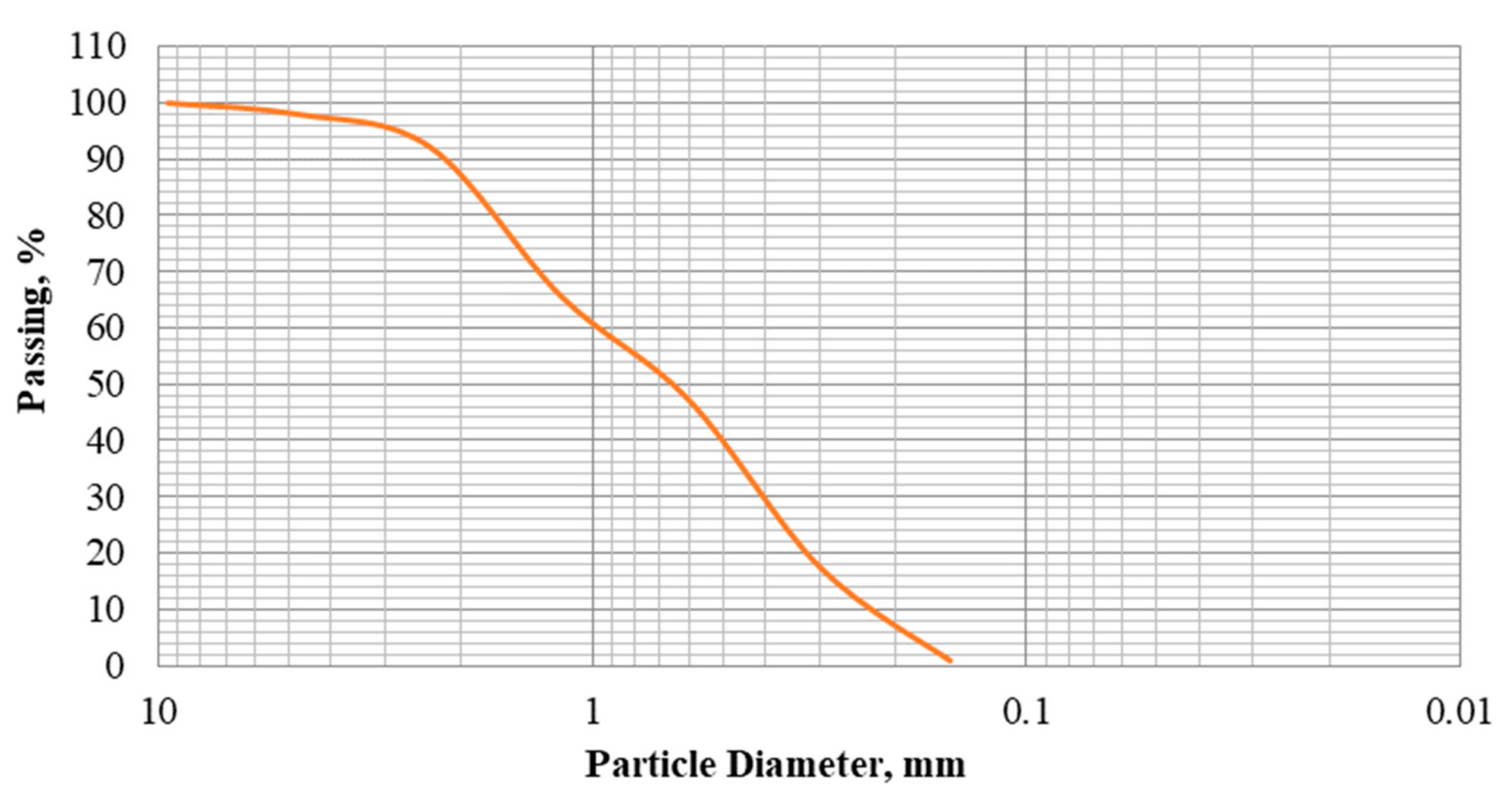
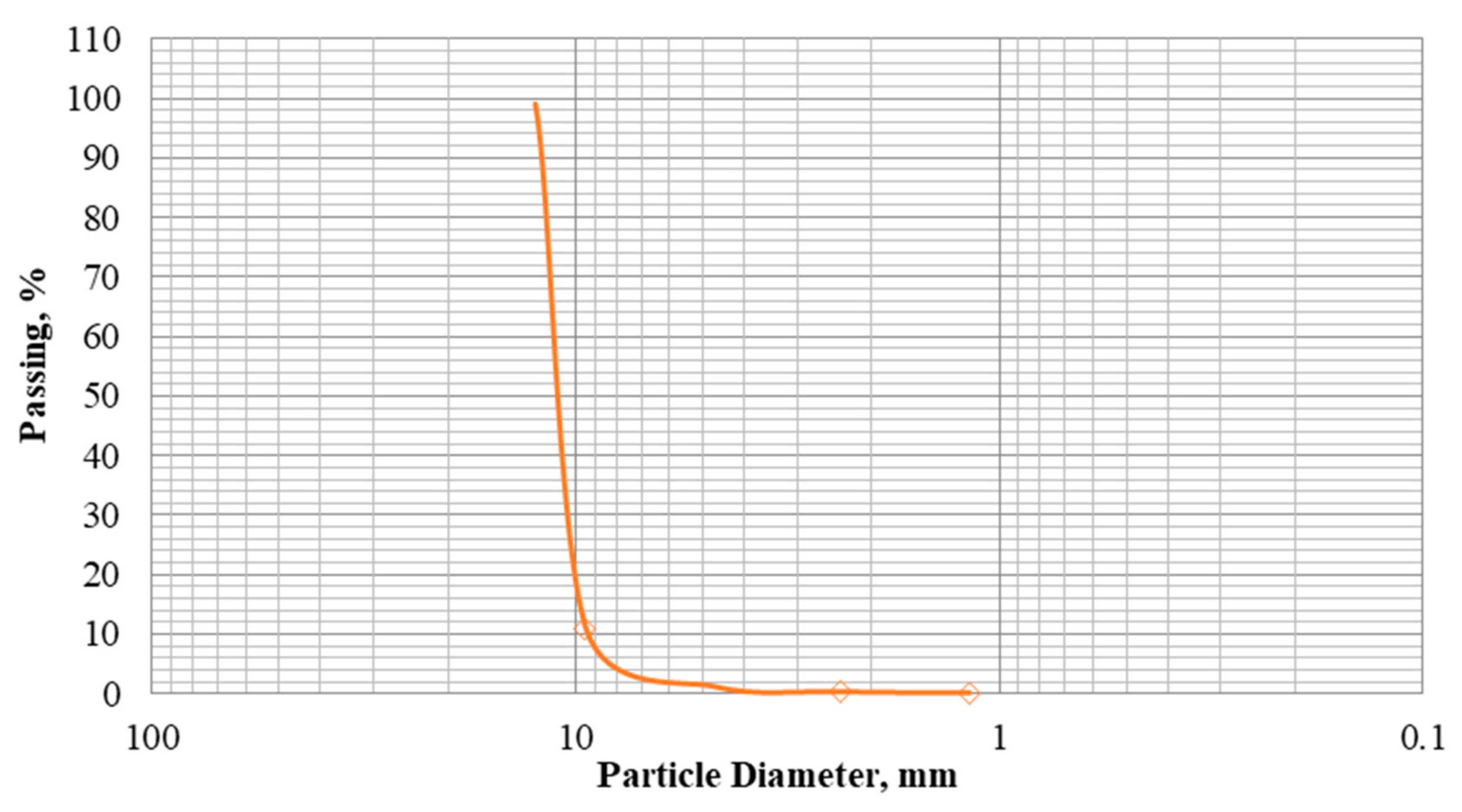

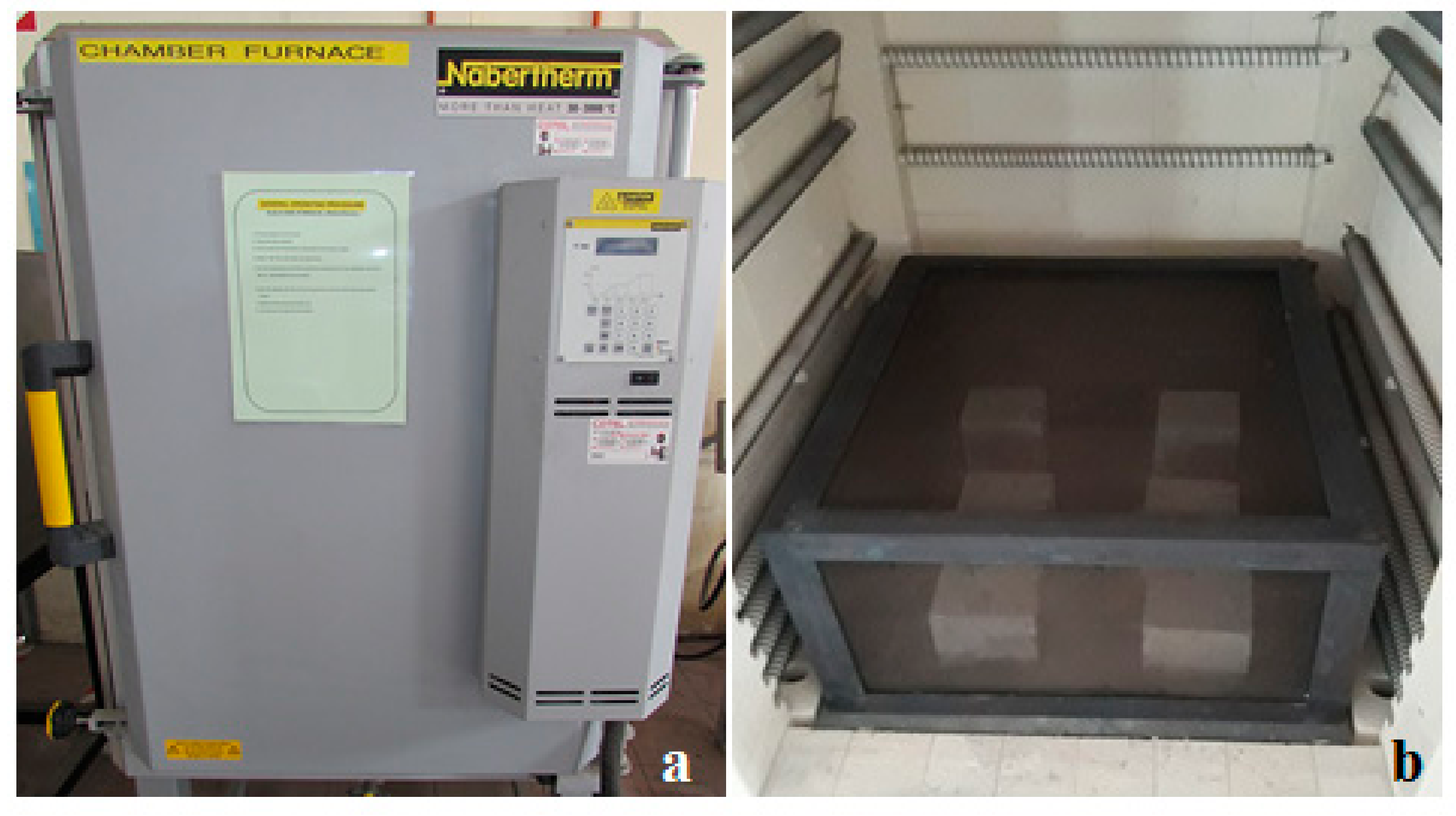


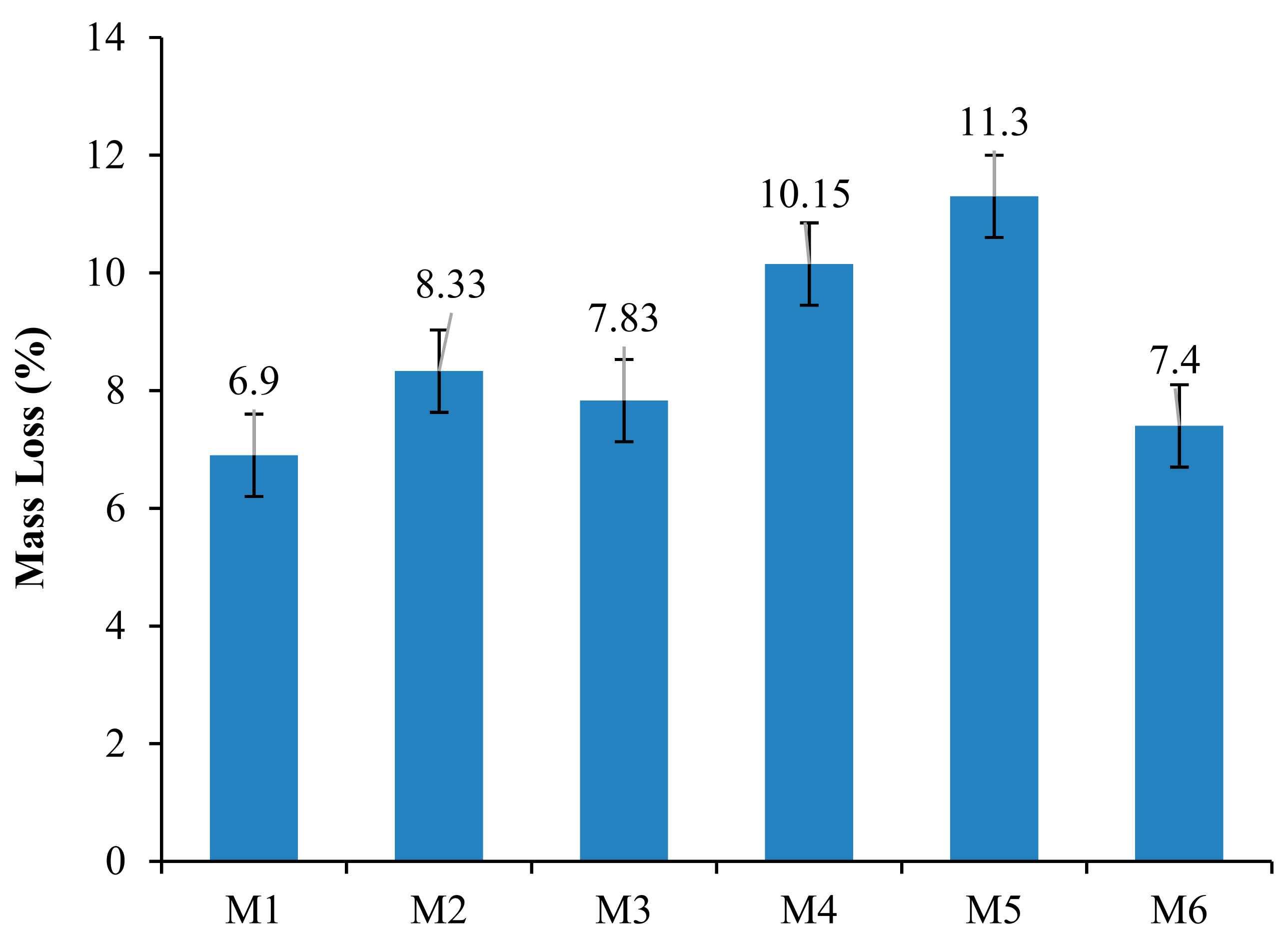

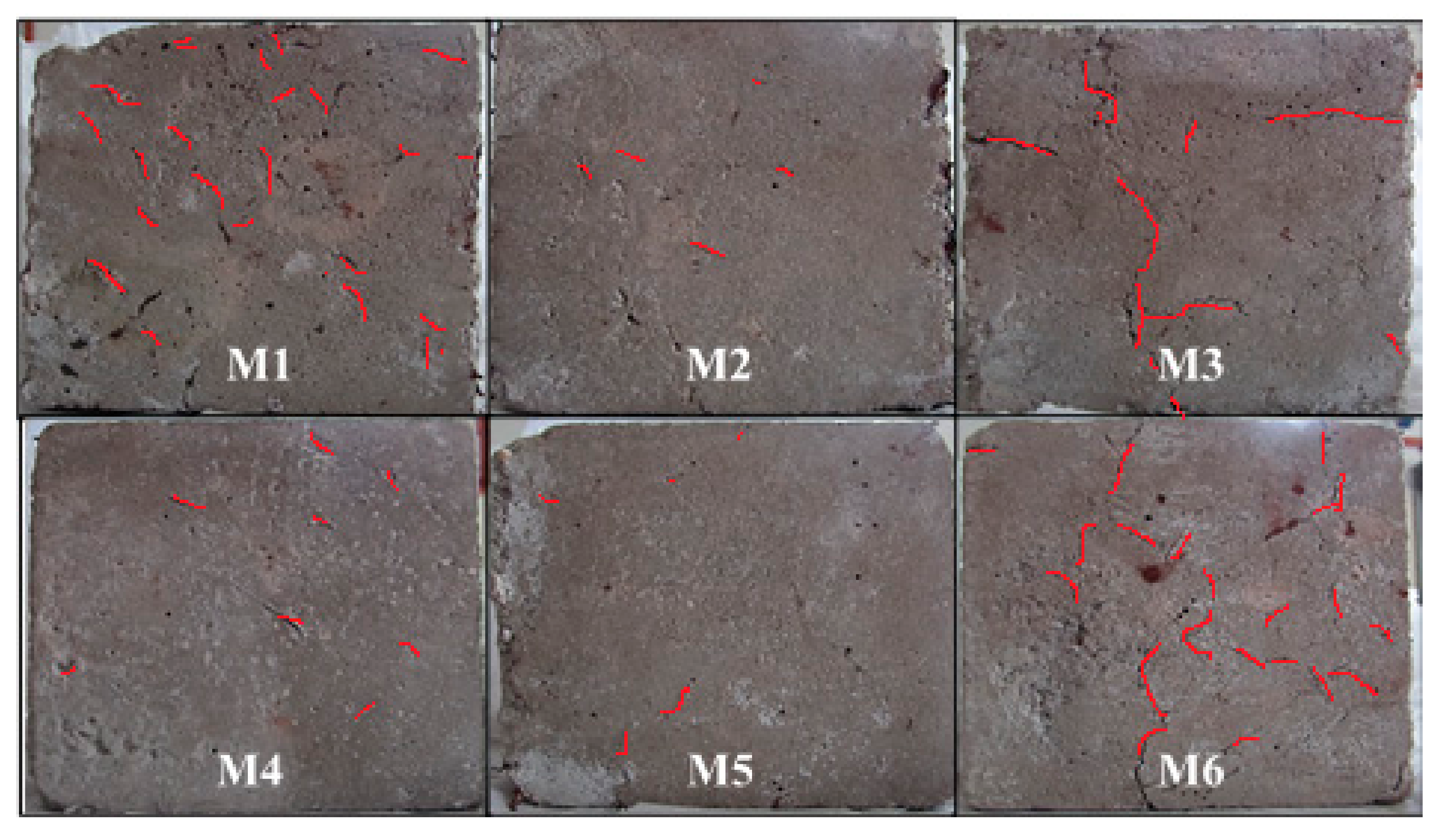

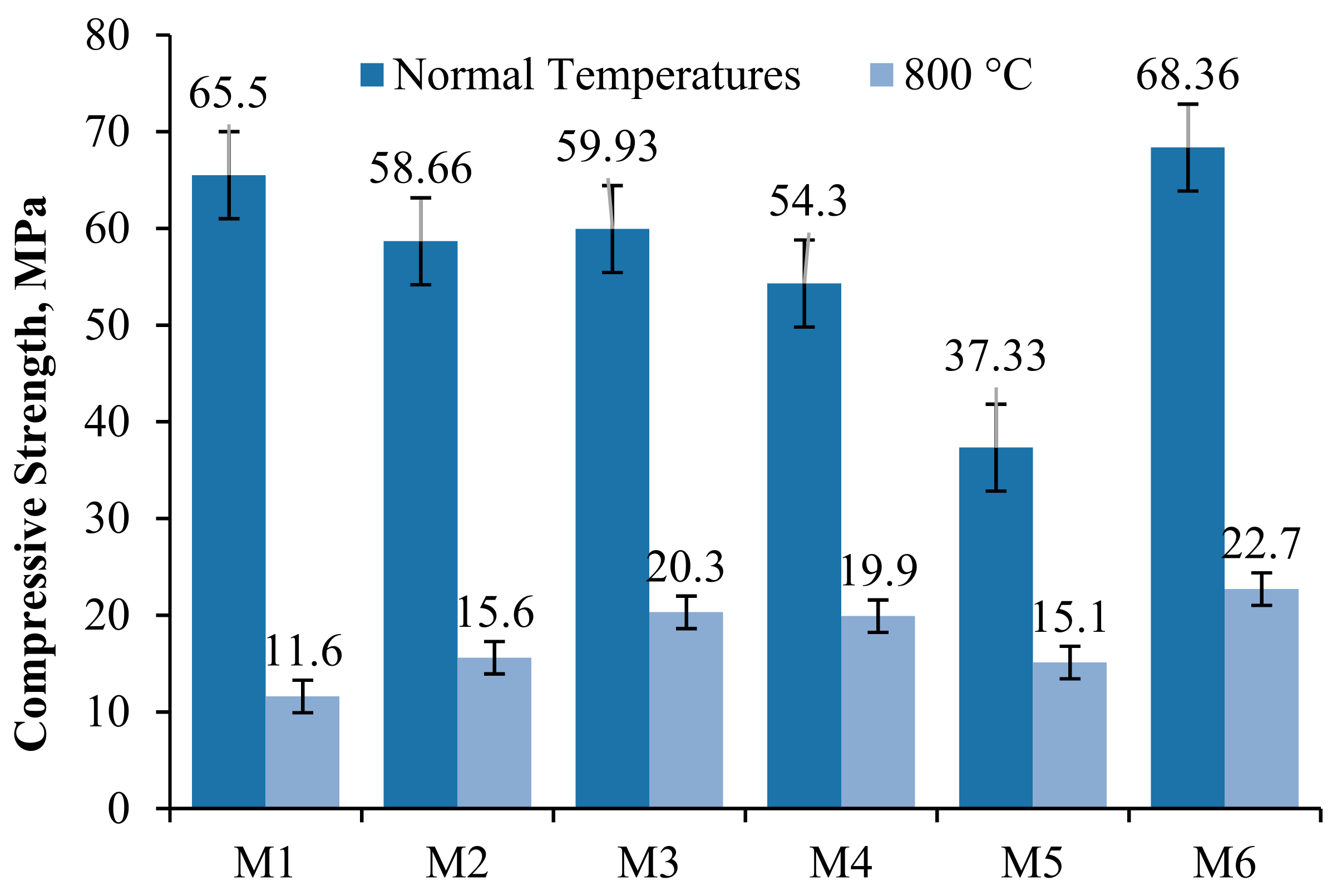
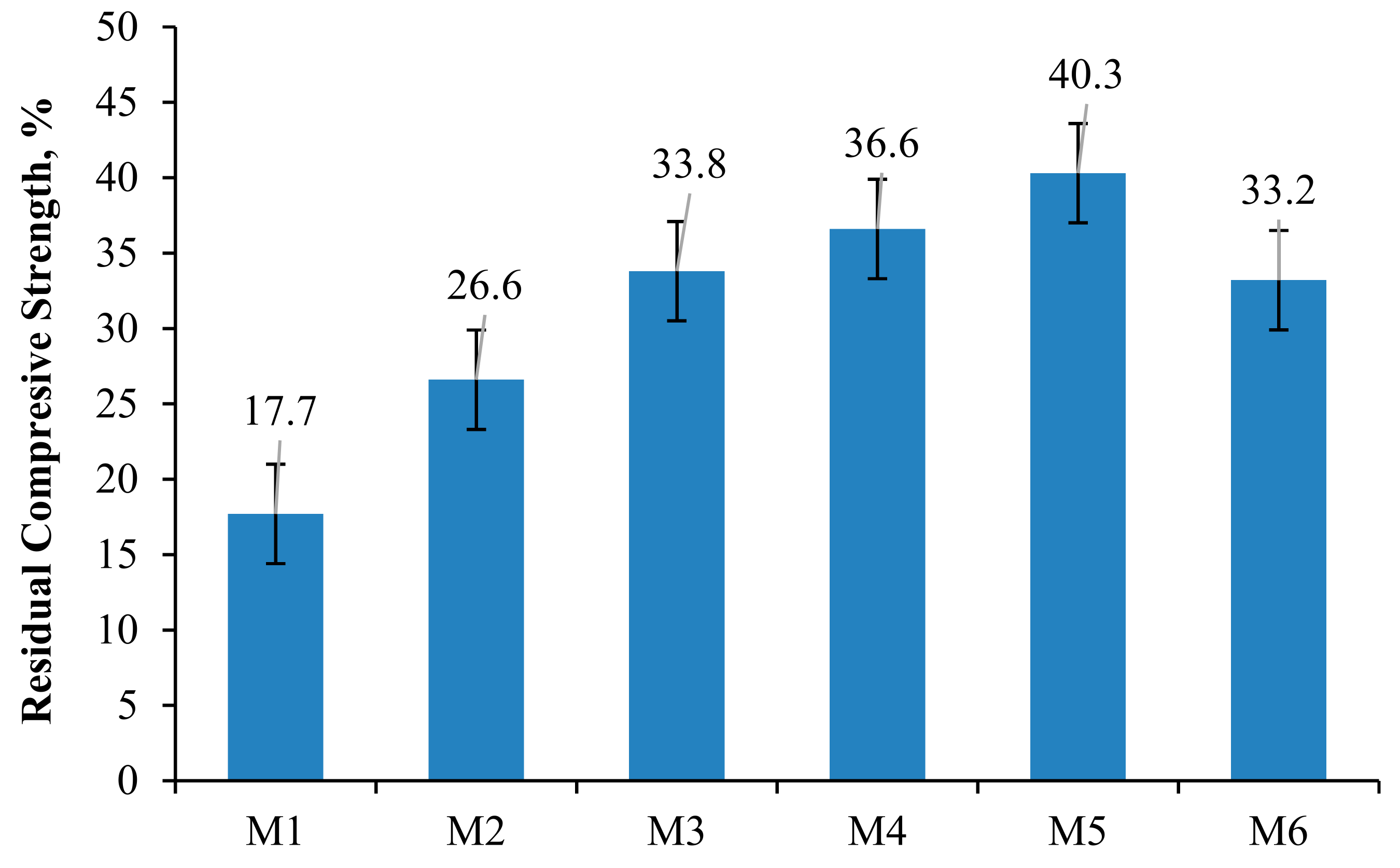
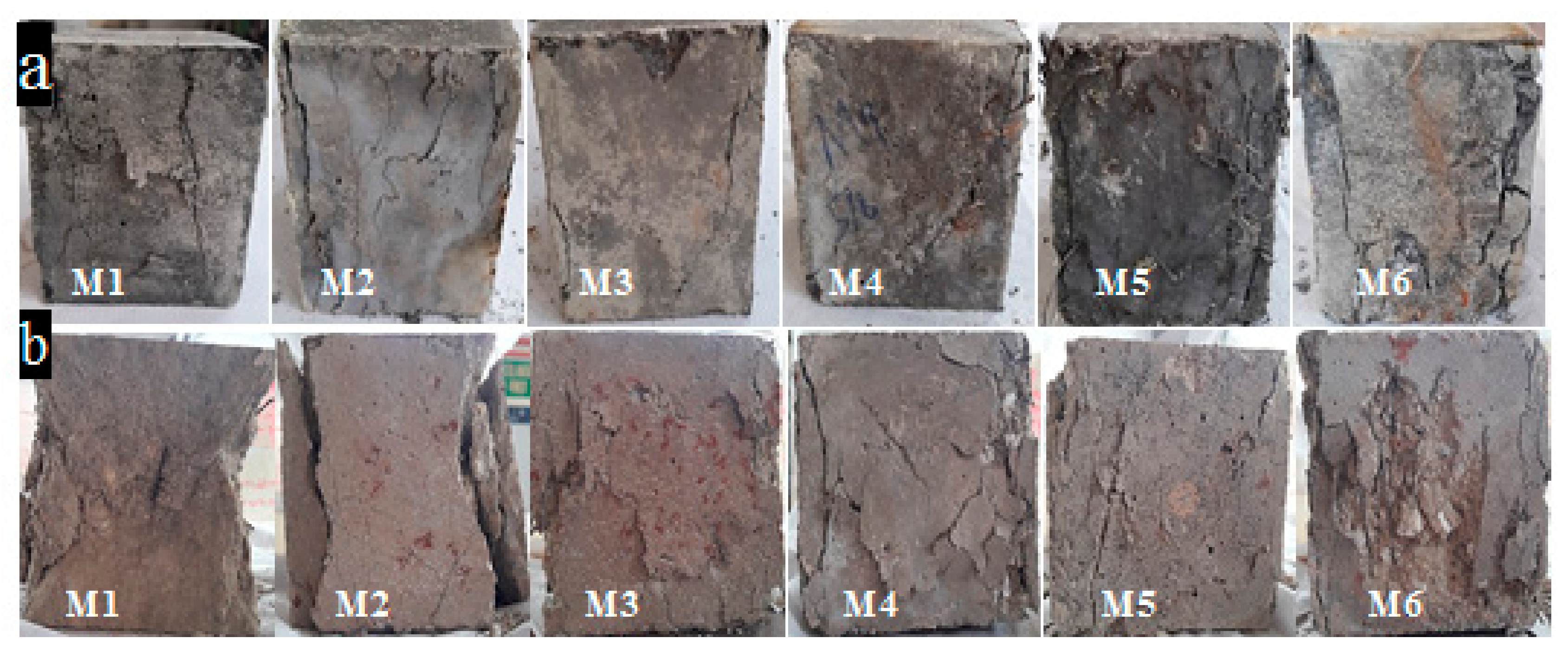
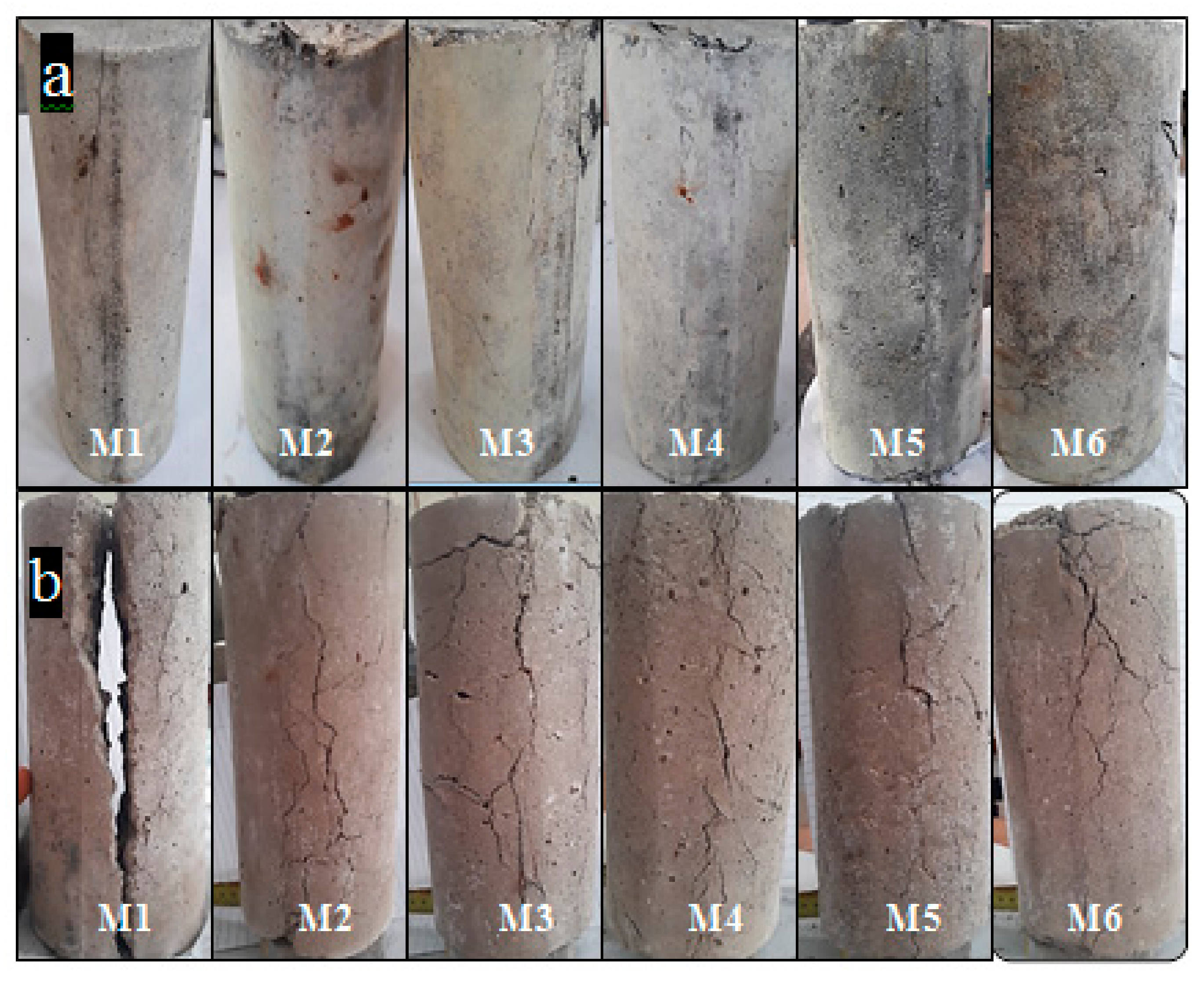
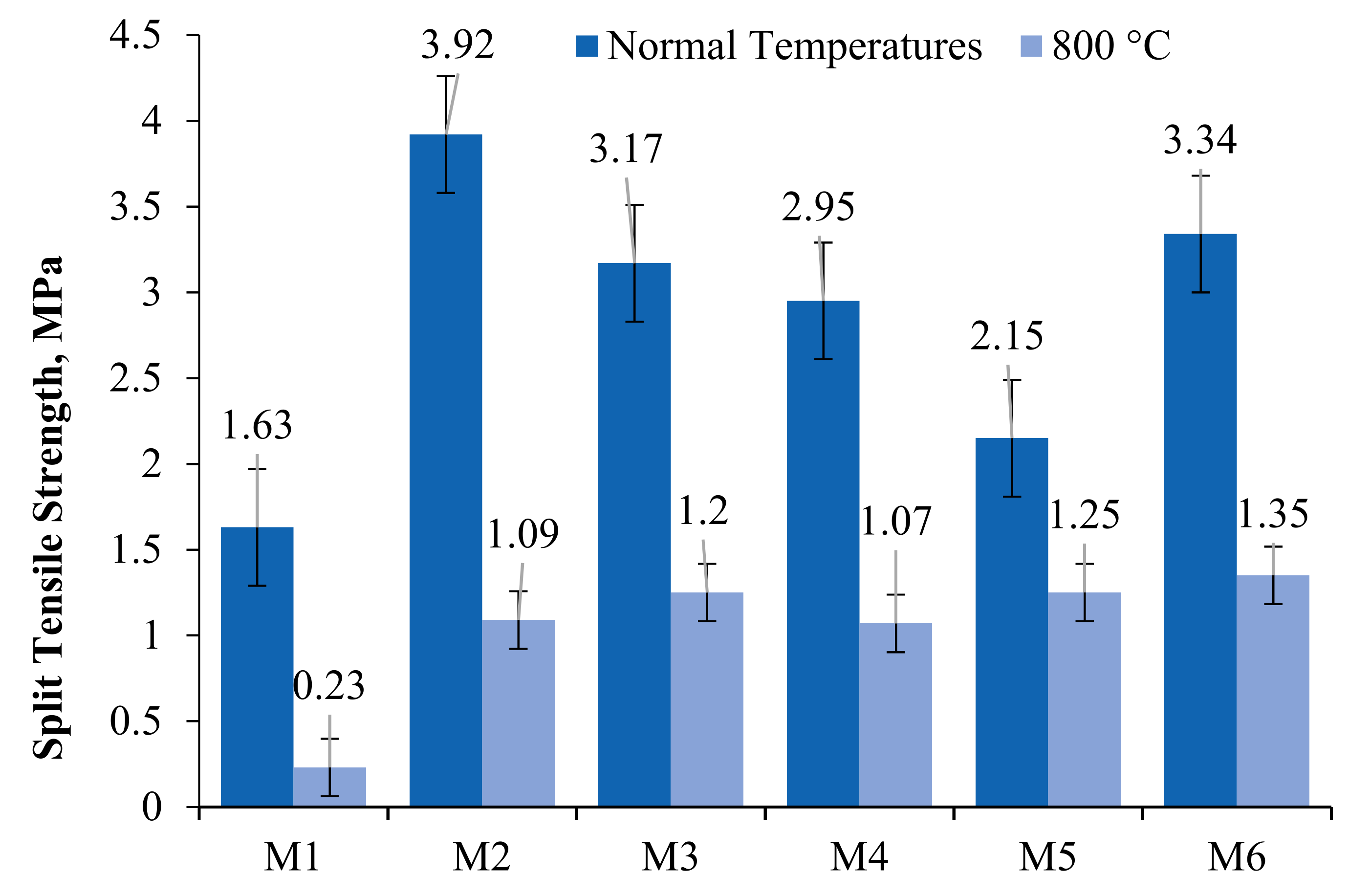
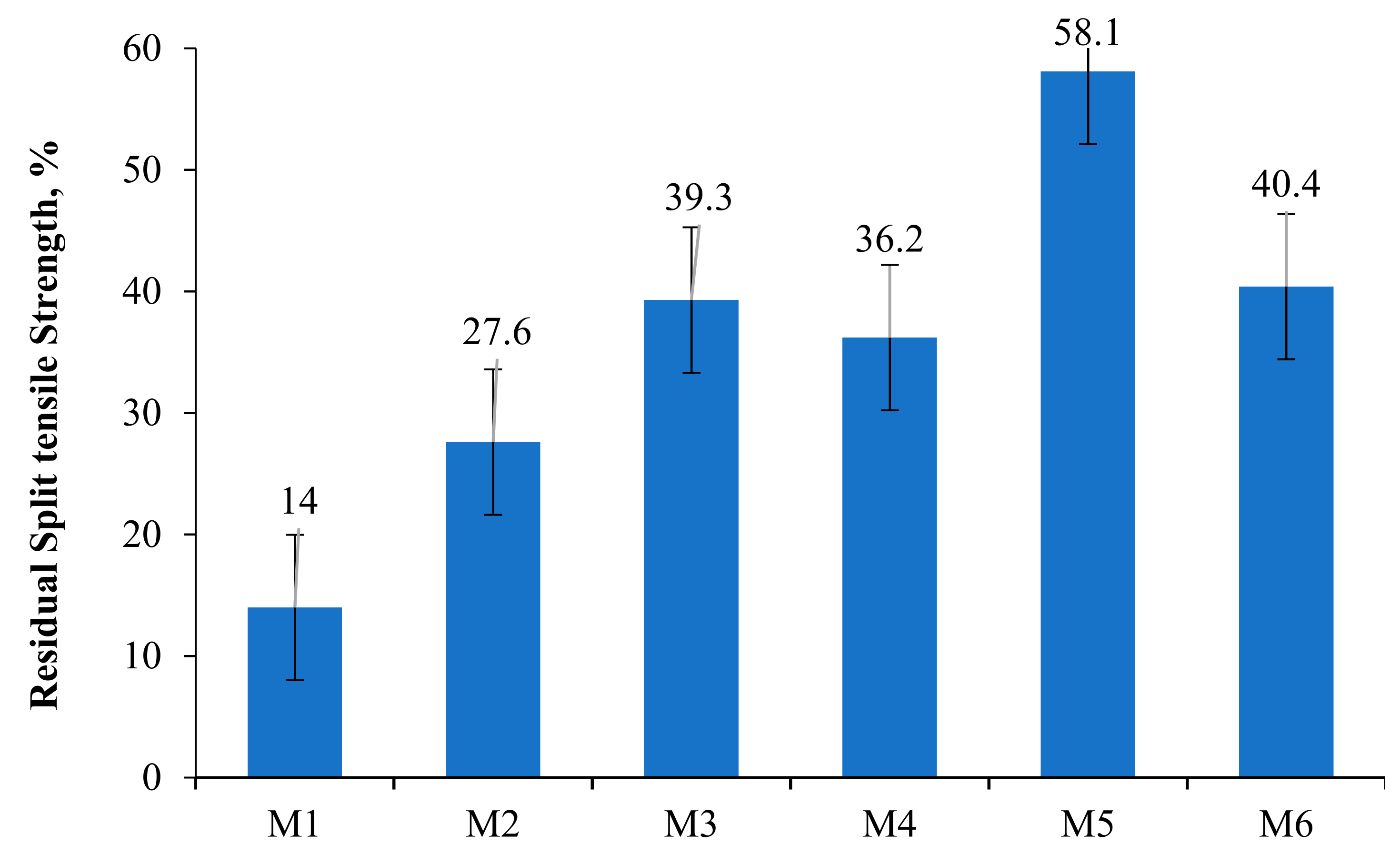
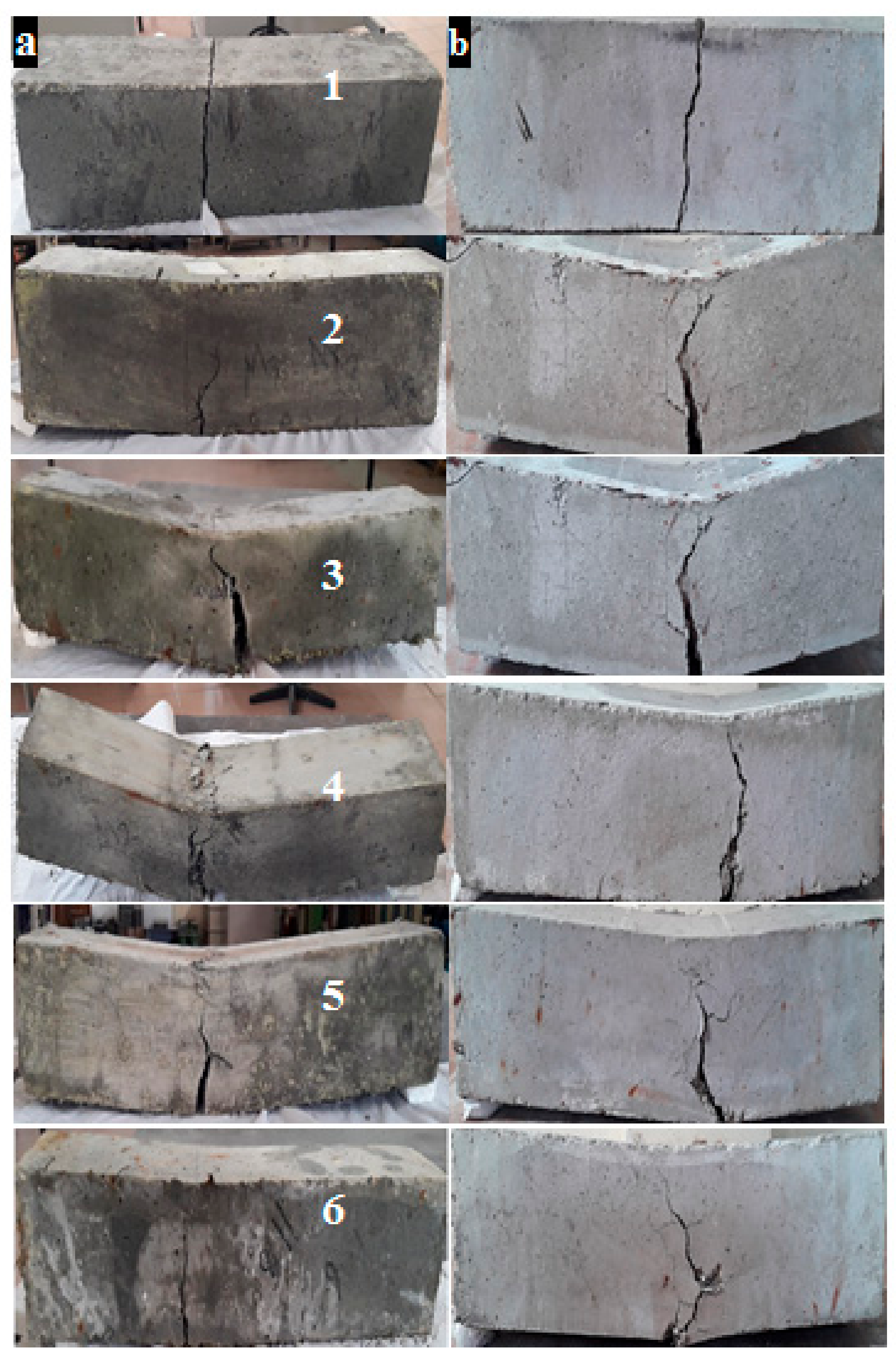
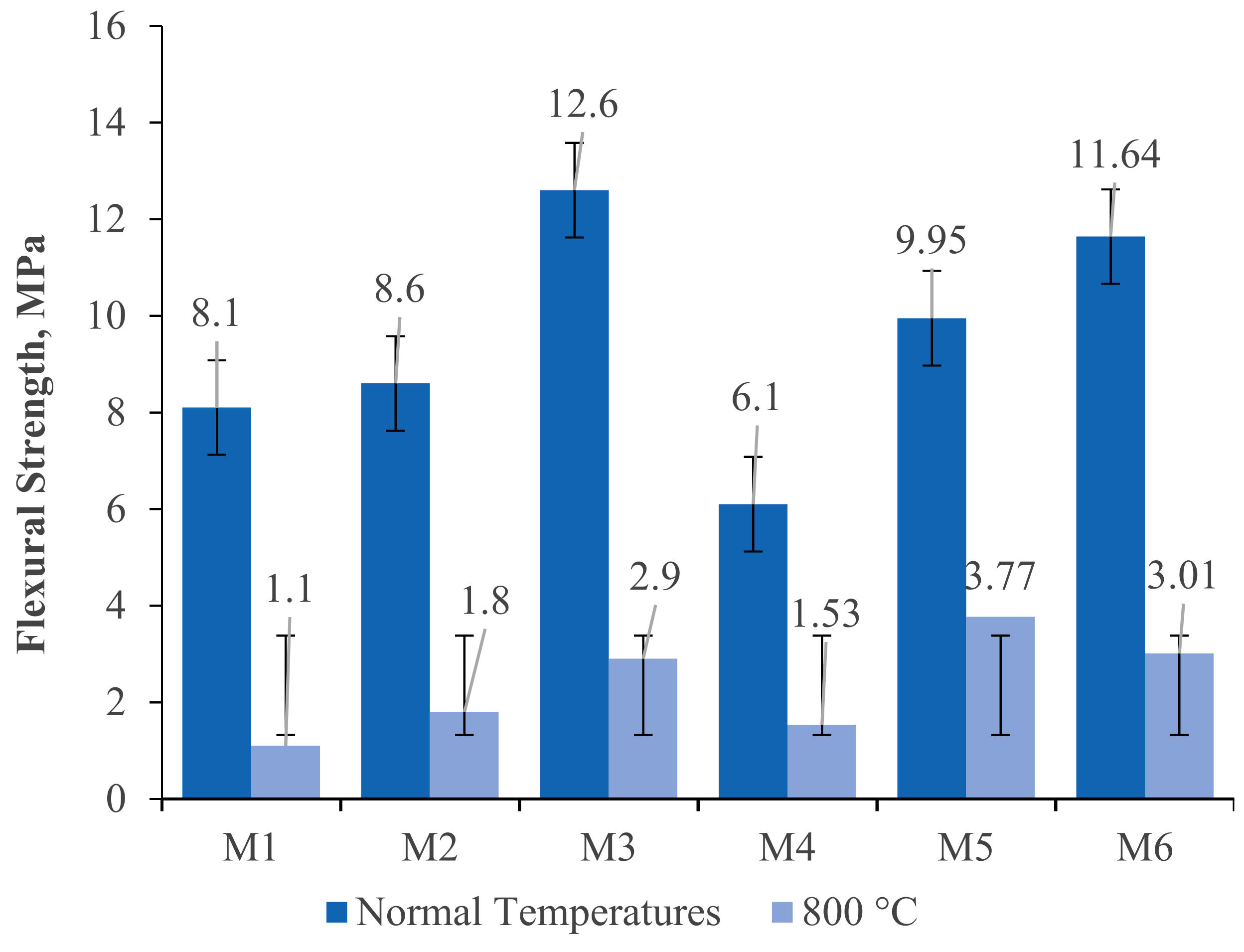
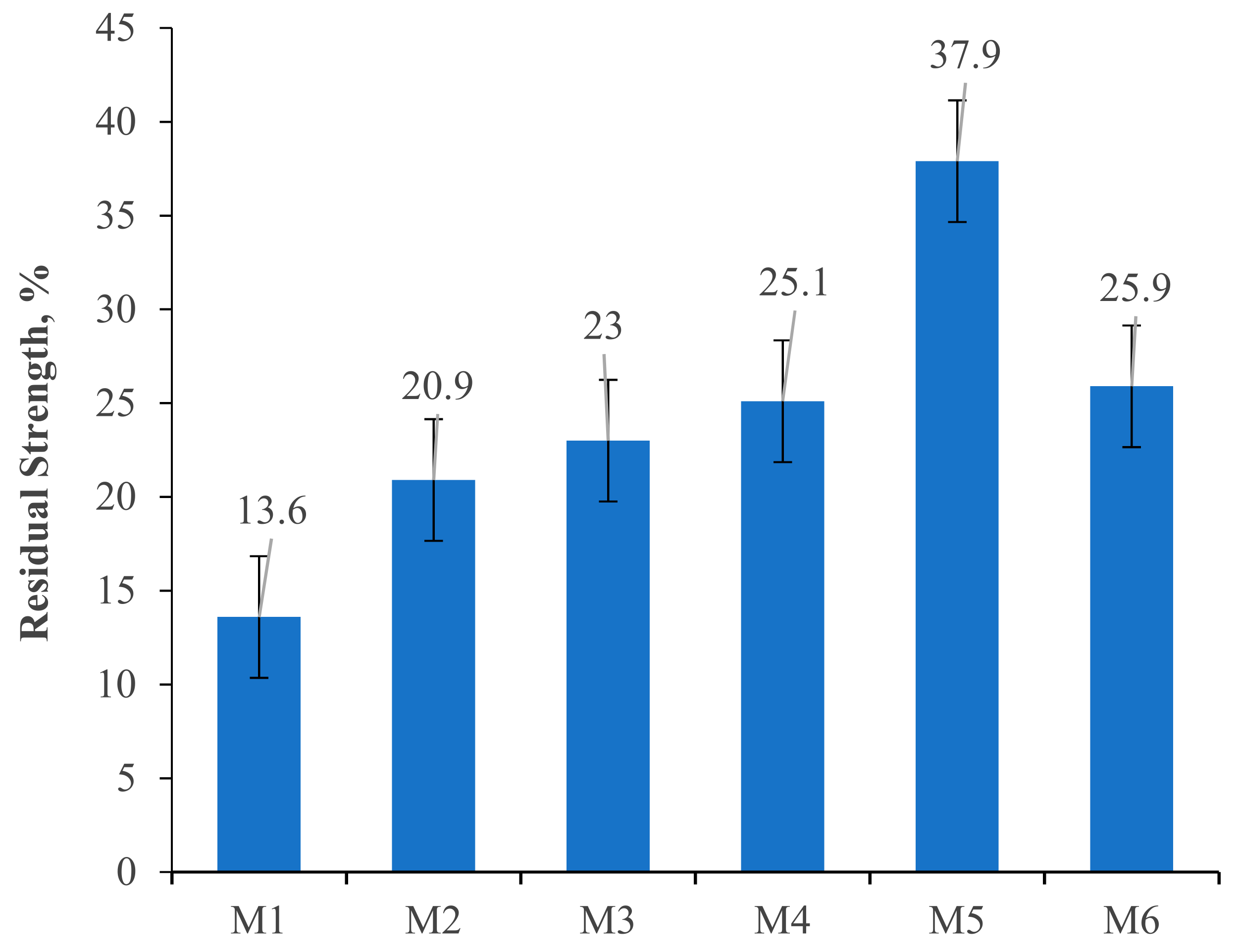
| Cement | Silica Fume | ||
|---|---|---|---|
| Chemical Composition (%) | Chemical Composition (%) | ||
| CaO | 64.64 | CaO | 0.91 |
| SiO2 | 21.28 | SiO2 | 91.6 |
| Al2O3 | 5.6 | Al2O3 | 1.69 |
| Fe2O3 | 3.36 | Fe2O3 | 1.68 |
| MgO | 2.06 | MgO | - |
| SO3 | 2.14 | SO3 | 0.33 |
| N2O | 0.05 | K2O | 1.19 |
| Loss of Ignition | 0.64 | LOI | 2.75 |
| Lime saturation factor | 0.92 | S.G | 2.26 |
| C3S | 52.82 | - | - |
| C2S | 21.45 | - | - |
| C3A | 9.16 | - | - |
| C4AF | 10.2 | - | - |
| Mix | Mix Proportions (Kg/m3) | Mix Proportions (%) | |||||||
|---|---|---|---|---|---|---|---|---|---|
| Silica Fume | Cement | Sand | Coarse Aggregate | Water | Superplasticizer | ST | PL | PS | |
| M1 | 50 | 500 | 880 | 710 | 235 | 2.2 | 0 | 0 | 0 |
| M2 | 50 | 500 | 880 | 710 | 235 | 2.2 | 1 | 0.125 | 0.125 |
| M3 | 50 | 500 | 880 | 710 | 235 | 2.2 | 1 | 0.25 | 0 |
| M4 | 50 | 500 | 880 | 710 | 235 | 2.2 | 1 | 0 | 0.25 |
| M5 | 50 | 500 | 880 | 710 | 235 | 2.4 | 1 | 0.25 | 0.25 |
| M6 | 50 | 500 | 880 | 710 | 235 | 2.2 | 1 | 0 | 0 |
Publisher’s Note: MDPI stays neutral with regard to jurisdictional claims in published maps and institutional affiliations. |
© 2021 by the authors. Licensee MDPI, Basel, Switzerland. This article is an open access article distributed under the terms and conditions of the Creative Commons Attribution (CC BY) license (https://creativecommons.org/licenses/by/4.0/).
Share and Cite
Mubarak, M.; Muhammad Rashid, R.S.; Amran, M.; Fediuk, R.; Vatin, N.; Klyuev, S. Mechanical Properties of High-Performance Hybrid Fibre-Reinforced Concrete at Elevated Temperatures. Sustainability 2021, 13, 13392. https://doi.org/10.3390/su132313392
Mubarak M, Muhammad Rashid RS, Amran M, Fediuk R, Vatin N, Klyuev S. Mechanical Properties of High-Performance Hybrid Fibre-Reinforced Concrete at Elevated Temperatures. Sustainability. 2021; 13(23):13392. https://doi.org/10.3390/su132313392
Chicago/Turabian StyleMubarak, Moawiah, Raizal Saifulnaaz Muhammad Rashid, Mugahed Amran, Roman Fediuk, Nikolai Vatin, and Sergey Klyuev. 2021. "Mechanical Properties of High-Performance Hybrid Fibre-Reinforced Concrete at Elevated Temperatures" Sustainability 13, no. 23: 13392. https://doi.org/10.3390/su132313392
APA StyleMubarak, M., Muhammad Rashid, R. S., Amran, M., Fediuk, R., Vatin, N., & Klyuev, S. (2021). Mechanical Properties of High-Performance Hybrid Fibre-Reinforced Concrete at Elevated Temperatures. Sustainability, 13(23), 13392. https://doi.org/10.3390/su132313392











